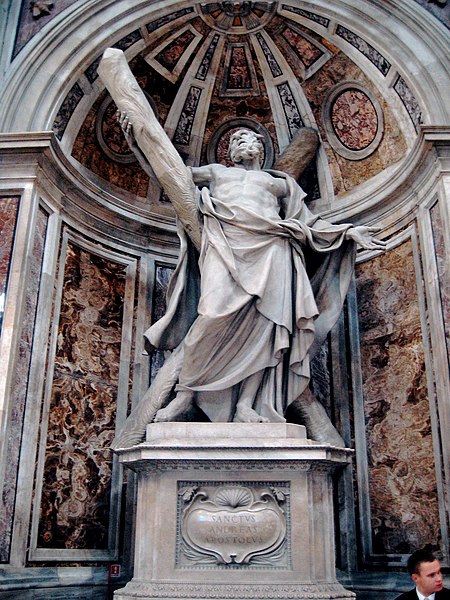Where is the Traveling Head of Saint Andrew?

One of the most controversial moments in Church History occurred in AD 1054. Cardinal Humbert previously warned the Patriarch of Constantinople “Either be in communion with Peter or become a Synagogue of Satan.” The Patriarch of Constantinople chose the latter option. In that year on July 16, Cardinal Humbert delivered a papal excommunication on the altar of Hagia Sophia in Constantinople. this event is usually documented as the official initiation of the schism of the Greeks. It is, of course, more complicated than that.
November 30 is the Feast Day of Saint Andrew and Constantinople claims Saint Andrew as the “founder” of the see of Byzantium, that is Constantinople. Nevertheless, the relationship between Rome and Constantinople is often described as a sibling rivalry between two brothers – Peter and Andrew having been literal brothers, according to the Holy Gospels.
What does this all have to do with the “traveling head” of Saint Andrew?
The skull of Saint Andrew originally was venerated in the imperial city of Constantinople. After the fall of that city to the Mohammedans in 1453, Christian relics were no longer safe in those regions.
There are historical records of the Mohammedans defecating in chalices, fornicating on altars, burning sacred relics of the saints, and pouring the blood of Christians into the baptismal fonts of captured churches. After fully desecrating the churches, they usually turned them into mosques. So as to preserve many of the relics kept in Constantinople, they were transferred to the West. Many of them made came to Rome, not surprisingly.
The holy head of Saint Andrew the Apostle came to Rome when it was given to Pope Pius II in 1461 by Thomas Paleologos (brother of the last Byzantine emperor). The revered relic was placed in the shrine depicted in the photo at the top of this post when the new Basilica of St. Peter’s was constructed. It is beautiful and depicts Saint Andrew in front of a X-shaped cross. Tradition teaches that Saint Andrew was tied to an X-shaped cross by the heathens. There the holy Apostle continued to preach the Gospel until he died of thirst.
There are four shrines surrounding the high altar in St Peter’s Basilica. Under the high altar are the bones of St. Peter. The four shrines surrounding the altar house Christendom’s four most coveted relics and are adorned with the statues of corresponding saints:
- the largest portion of the true cross (St. Helena)
- the miraculous veil of St. Veronica (St. Veronica)
- the lance that pierced the side of Christ (St. Longinus)
- the skull of St. Andrew (St. Andrew)
The statue of St. Andrew’s shrine is depicted in the photo above. Pilgrims can still visit this shrine at the Vatican. HOWEVER, THE SHRINE IS NOW EMPTY. The head of Saint Andrew is now missing from this glorious Roman memorial.
Why?
As an ecumenical gesture of good will, His Holiness Pope Paul VI in 1964 had the skull of Saint Andrew removed from its place in St Peter’s and returned to the Greek Orthodox Church in Patras where it remains to this day. Thus, one of the four column shrines surrounding the high altar of St. Peter’s Basilica is without its relic. The head of Saint Andrew now belongs to the Greeks.
Few people know about this “handing over of the head”.
Do you enjoy reading Canterbury Tales by Taylor Marshall? Make it easier to receive daily posts. It’s free. Please click here to sign up by Feed or here to sign up by Email. Please also explore Taylor’s books about Catholicism at amazon.com.
Dive Deeper

GET CONFIDENT IN YOUR FAITH
Explore the fascinating world of Catholic teachings with Dr. Marshall. Together you’ll unpack the brilliant answers the Church gives to tough questions about the Faith. The best part: you go at your own pace. Start this exciting journey today.
